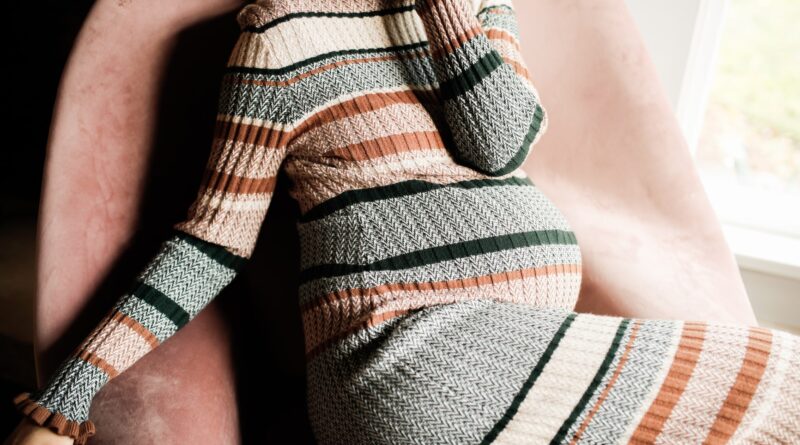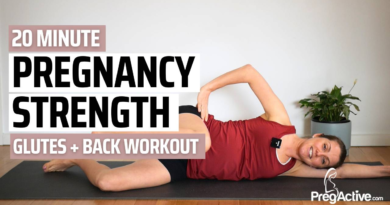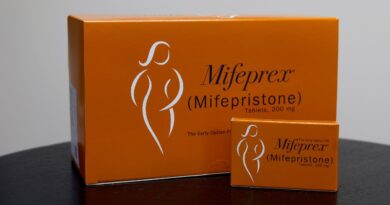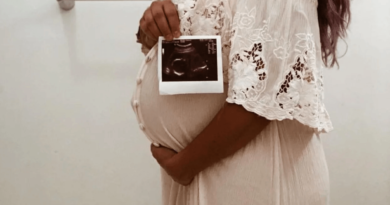5 tips for building a sustainable maternity wardrobe
For pregnant people, there is no shortage of things to worry about—from what to register for to how to break the baby news to friends, family and colleagues. As the CEO of MARION, a maternity workwear brand, I have good news: Maternity fashion doesn’t have to be inherently unsustainable, and in fact, it can actually be quite the opposite—you can build a wardrobe with sustainable maternity clothes.
So if you’re pregnant and hesitant to buy a new maternity wardrobe that you’ll only wear for a short period or cringe when garmets arrive in several virgin plastic bags, I’m here to reassure you—and show you—how to make your maternity wardrobe work for you. From buying only what you need to examining the fabrics, here are five easy steps that can make your new maternity wardrobe both eco-friendly and a good investment.
How to build a wardrobe with sustainable maternity clothes
1. Buy only what you really need
You don’t have to buy a ton of maternity clothes to have a great maternity wardrobe. Why? Because lots of pieces already in your closet will serve you well during pregnancy, like that open-front blazer, flowy peasant top and empire waist maxi dress. Pack up all your tight, stiff, waist-cinching clothes in a box for later, and put your most forgiving garments front and center in your closet. There are a few essentials it’s hard to live without when you’re expecting, but you can build a gorgeous wardrobe for your pregnancy while buying surprisingly few actual maternity clothes.
2. Buy from companies that prioritize sustainable materials & practices
Want to know if that maternity piece you’re eyeing is planet-friendly? Start by looking for a clear listing of the materials used in the garment. Here are some great examples:
- Fabrics: TENCEL (made from sustainable Eucalyptus trees in a closed-loop system), Lyocell bamboo (rather than traditional bamboo rayon), organic or recycled cotton, recycled nylon, recycled polyester, organic hemp or organic linen.
- Certifications: Oeko Tex (tests for harmful substances at all processing stages), BCI (Better Cotton Initiative), GOTS (Global Organic Textile Standard), and GRS (Global Recycled Standard).
Look for brands that have traded plastic garment bags for recycled or compostable packaging and offer carbon neutral fulfillment. Bonus if they offer buy-back or other second-life programs to keep their garments out of the landfill. A few of our favorite sustainable maternity brands are MARION, Pact and Girlfriend Collective.
3. Look for clothing you’ll want to actually wear after pregnancy
If your maternity clothes are unflattering or poorly made, who could blame you for celebrating the day you get to leave them behind for good?
blogherads.adq.push(function(){
blogherads.defineSlot(‘flexrec’, ‘ad_div_in_body_2’).setTargeting(‘targetingKey’,
‘targetingValue’).display();
});
News flash: It doesn’t have to be this way. Advances in stretch-fabric technology and thoughtful design updates have ushered in a whole new generation of maternity styles that really, really (no kidding) look great after pregnancy and nursing. Look for dresses with empire waists, stylish pleated tops that will expand and contract beautifully with your tummy, and high-waisted leggings stretchy enough to hug your curves post-baby. Some maternity brands that offer a great range of “before and after styles” include MARION, Hatch and Nom Maternity.
4. Let your maternity clothes be reused
Even if many of your pieces are for “pregnancy, nursing and beyond,” there are a few things you’re unlikely to wear past the baby stage. Key wardrobe items like over-bump pants and skin-to-skin tops truly lose their usefulness after that last little one starts toddling around. Extend the lives of these items by donating them to someone who will use them again, by posting them on giveaway sites like Facebook’s Buy Nothing Project, Nextdoor or Craigslist. Or, try listing them through resale merchants like ThreadUp or Poshmark for a tidy return (quality garments will always score top resale prices on these sites).
5. Recycle or compost as a last resort
The truth is that garment recycling isn’t as easy or accessible as it should be—yet. A few stores offer decent solutions. H&M provides customers a discount if they bring in a bag of clothes for recycling, and Madewell will give anyone $20 toward their next purchase in exchange for an unwanted pair of jeans. Websites like Earth911 and Recycle Now offer searches by zip code.
Believe it or not, clothes and other textiles can make great material for composting IF they are made with 100% natural fibers. Items made of pure wool, cotton, silk, or linen that are too old or damaged to donate can be cut up into small pieces and placed in your composting system (remove buttons, zippers, and other notions first, of course).
Clothing made for breastfeeding and pregnancy presents some unique challenges in sustainability. Limiting your purchases to what you really need, choosing items you’ll wear beyond maternity and purchasing from companies that share your values are the most powerful ways you can keep your pregnancy green. Donating, selling second hand, recycling and composting are also excellent tools to ensure that your items have a planet-healthy life after they leave you for good.
blogherads.adq.push(function(){
blogherads.defineSlot(‘flexrec’, ‘ad_div_in_body_1’).setTargeting(‘targetingKey’,
‘targetingValue’).display();
});




